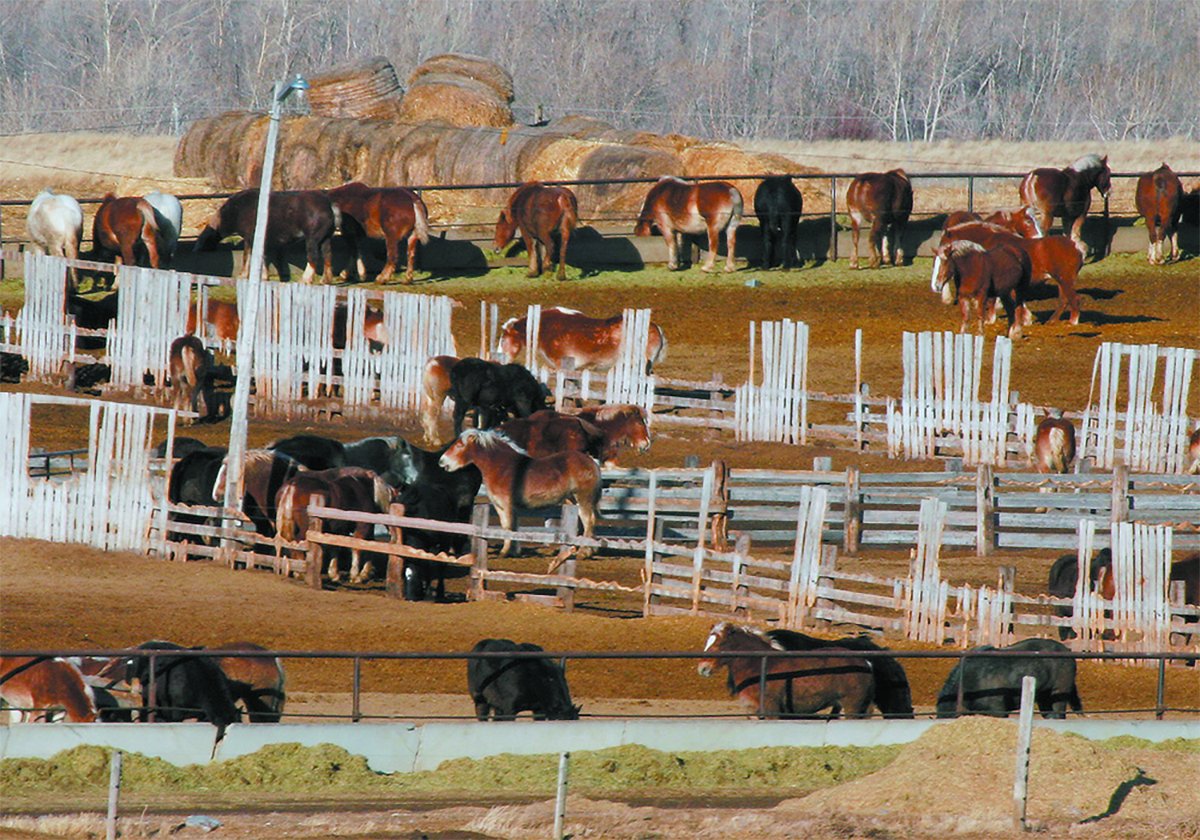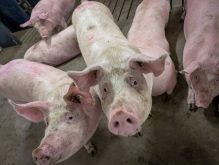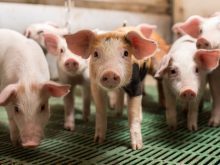Dr. Tawnya Copland peered into a golf-ball-sized hole in the front of Pearl’s head.
The veterinarian had been invited by Pearl’s new owners to help them figure out how to care for the rescued horse once winter arrives.
The hole wasn’t a problem last year because Pearl spent the winter in a heated barn.
However, that option isn’t available this winter and the horse’s new owners, Shelby Gross and her mother, Candy Richardson, worry that cold winter air might cause more damage to the horse’s lungs and nasal passages.
Read Also

Canada’s slaughter horse industry lacks transparency
The lack of clear reporting and public access to data keeps the industry largely hidden, leaving questions about humane treatment and traceability unanswered.
During her visit, Copland talked with Gross and Richardson about Pearl wearing a balaclava or tight equine slinky to reduce the cold and keep out dust and hay.
“I don’t want her burying her head and filling that up,” Copland said about the hole.
A good snort helps Pearl keeps her nose clear of dust and debris, but Copland, Gross and Richardson wonder if a tight slinky would get moist and soggy like a child’s scarf in winter. Would the face covering just be a medium for infection?
“She may become a barn horse,” said Copland.
Pearl was part of two groups of starving horses from Carrot Creek, Alta., that ended up at Susan Fyfe’s Keno Hills Stables outside Edmonton, home of the Rescue 100 Horse Foundation.
Pearl was a pregnant, stinking mess when she arrived in 2009. Her head was covered in frozen pus.
“She smelled so foul, you could hardly stand by her stall,” said Fyfe, who drove to Camrose to see Pearl and her new home.
Staff and volunteers put Pearl on antibiotics, cleaned the hole in her head and raised $2,500 for reconstructive surgery to cover the hole.
A layer of bone lining and skin was flipped down and sown over the hole, but it blew off a few days later during a bandage change when Pearl snorted. Her caregivers decided not to try another surgery.
“She’s happy,” said Fyfe.
Pearl is one of 301 horses to pass through Rescue 100 since a group of 100 starving Arabians were rescued from a northern Alberta farm in 2008.
A hole straight into her nasal cavity may have made Pearl the biggest challenge to rehabilitate and place.
It was a chance conversation in a Camrose western wear store where Gross works that brought the two together. Gross looked for more information on the Rescue 100 Foundation’s website after hearing about Pearl.
What she noticed most wasn’t the hole in Pearl’s head, but the kindness in her eyes.
“There was something about her. The first thing that came out at me was her kind, kind eyes,” said Gross as Pearl nuzzled up to her.
“She’s really sweet. She’s got potential to do something good.”
The closeness between horse and owner was evident from the first time Pearl arrived at her new home Sept. 20, said Richardson.
“She’s been like this with Shelby from the get go,” she said.
“As long as she’s with Shelby, she’s so relaxed.”
It’s not the first stray animal that has found shelter on the Camrose farm. All 21 cats and kittens, two of the three dogs and eight of the 12 horses have been rescued.
“They’re just as good,” said Gross, who has spent hours brushing Pearl and gaining her trust.
“We take it step by step because she’s not going anywhere.”
















